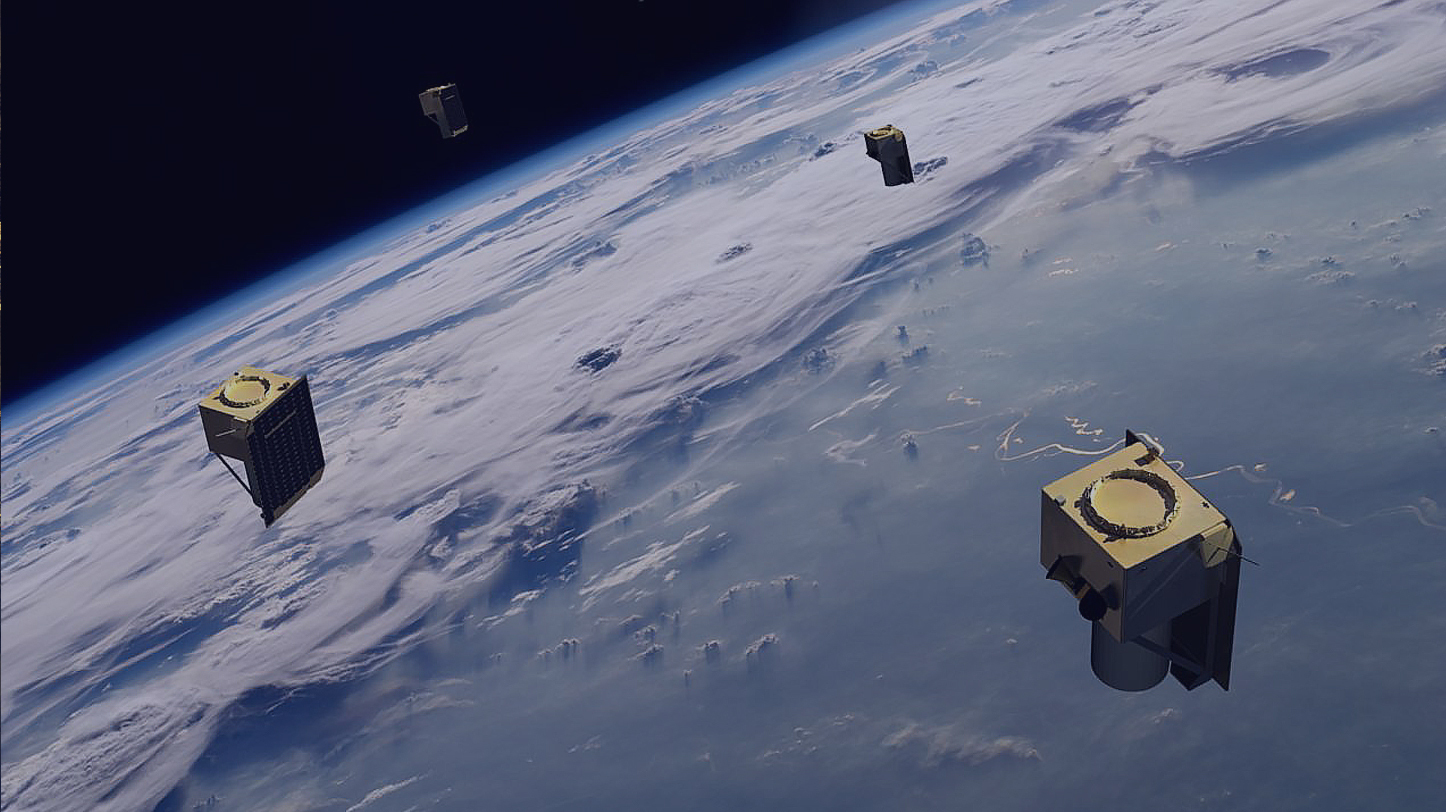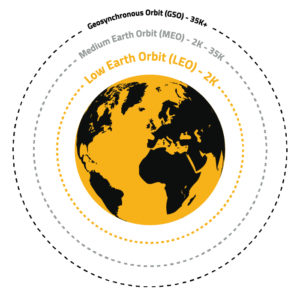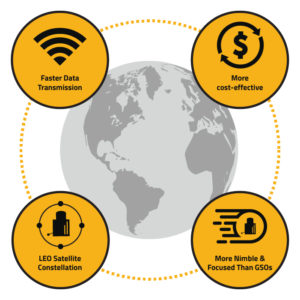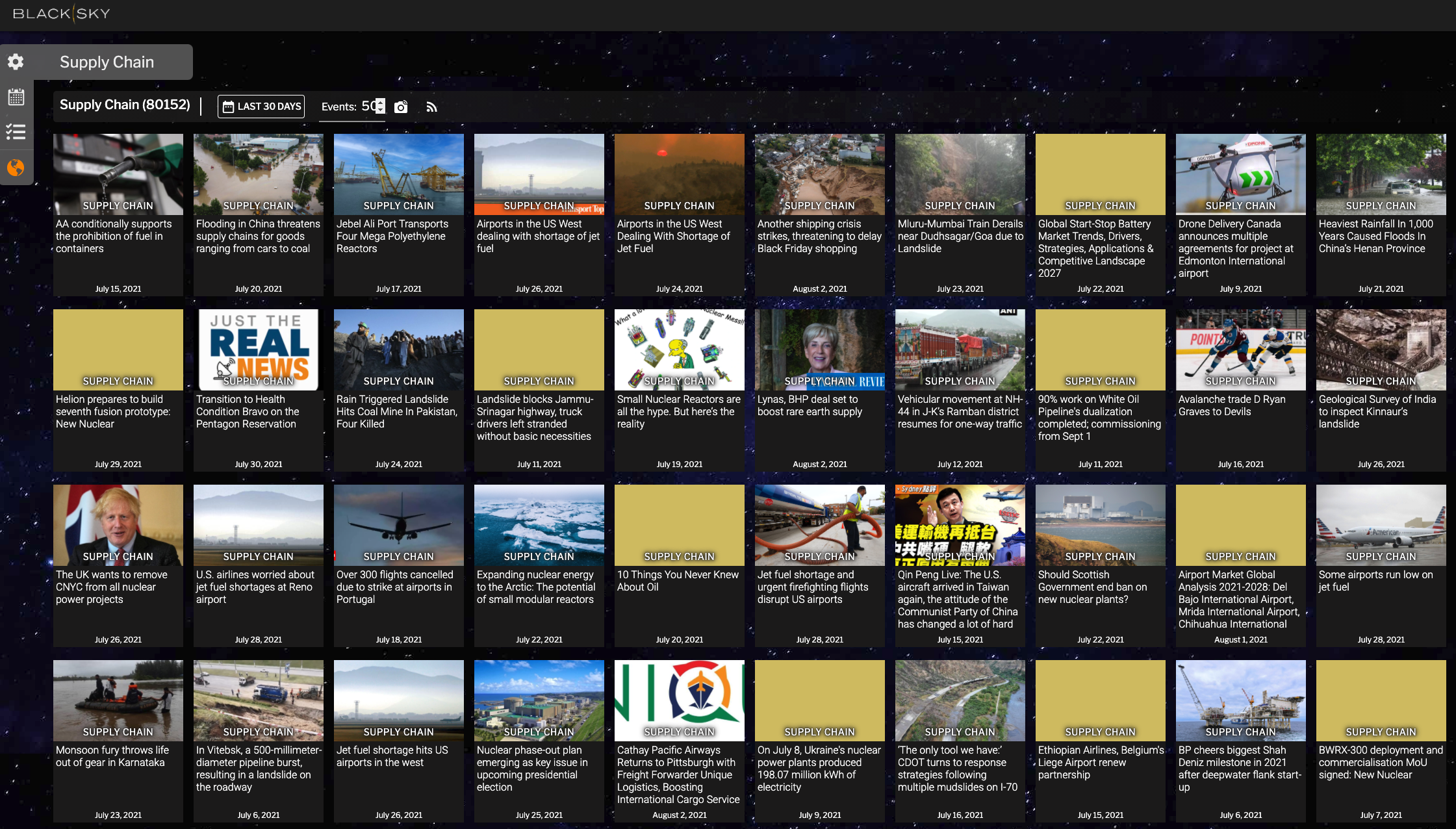
LEO technology is taking the commercial satellite industry by storm – here’s what you need to know.
More than 4,000 active satellites currently orbit the Earth, and experts expect that number will skyrocket in the next several years. The reason for this dramatic increase is that the LEO satellite industry is literally taking off, due in part to recent technological advancements that have made them more cost effective and easier to launch and manage. Organizations from both the private and public sectors are flocking to LEO satellites for a variety of use cases.
To better understand the future of the commercial satellite industry, we must further explore LEO satellites and the benefits the technology brings to the table.
What Are LEO Satellites?
LEO satellites orbit the Earth at 2,000 kilometers above its surface and have a speedy orbital period of between 84 and 127 minutes. LEO satellites typically work together as a large constellation of small satellites (known as smallsats), communicating information back and forth as they observe the Earth and create a detailed image of a given area. LEO satellites are also non-geostationary, meaning they have the freedom to move where needed rather than being stationary.
History of LEO Satellites
 LEO satellites dominate Earth’s orbit today, but that was not always the case. Until somewhat recently, traditional Geosynchronous Orbit (GSO) satellites were the preferred method for observing the Earth. GSO satellites orbit at more than 35,000 kilometers above the Earth and match its rotation, allowing for a wide view that can see most of the planet’s surface with just three working together. The first GSO satellite was launched in 1963 and was the industry standard for more than 30 years.
LEO satellites dominate Earth’s orbit today, but that was not always the case. Until somewhat recently, traditional Geosynchronous Orbit (GSO) satellites were the preferred method for observing the Earth. GSO satellites orbit at more than 35,000 kilometers above the Earth and match its rotation, allowing for a wide view that can see most of the planet’s surface with just three working together. The first GSO satellite was launched in 1963 and was the industry standard for more than 30 years.
LEO technology began to take shape in the early 1990s, but most launch efforts were cancelled because the technology did not yet meet the demand. At the time, building and launching LEO satellites was more expensive than organizations were willing to pay for unproven technology. Over the last three decades since LEO satellites were first introduced, bandwidth demand has greatly increased and the technology has developed rapidly to meet the demand. Of the 4,084 operating satellites today, LEO satellites make up 3,328 while GSO satellites only make up 560.
In between GSO and LEO, we have Medium Earth Orbit (MEO) satellites, which are at an altitude between 2,000 and 35,000 kilometers. While the first MEO satellite was launched in the 1960s, the technology never picked up steam and is not as popular of an option as LEO or even GSO. However, keep an eye out for MEO satellites in the future as the technology continues to advance.
For our purposes, let us compare LEO and GSO to understand where the commercial satellite industry is headed.
What Benefits do LEO Satellites Bring?

LEO satellites have several advantages compared to traditional GSO satellites, which would explain why they have quickly become the most popular option for the private and public sectors alike.
First, LEO satellites are less expensive and less complicated to launch than GSO satellites because they weigh less and orbit closer to the Earth’s surface. With lower latency and higher bandwidth, LEO satellites can rapidly transmit information unlike anything we have seen before. Although they are close to the Earth, information is instantly sent between the satellites in the constellation to create a large coverage area. In fact, a large enough constellation of LEO satellites working together has the potential to provide 100% imaging coverage of the Earth.
Another advantage LEO satellites have over GSO satellites is that they are not stuck in the same, slow moving position. LEO satellites are nimble, and constellations can be moved to focus in on a specific area of interest. LEO satellites also use frequencies that allow for higher data rates, smaller antennas, narrower beams and greater security. In addition, advancements in antennas and processing have improved the throughput for each LEO satellite, which increases the power of the overall constellation.
What Are the Challenges Associated with LEO Satellites?
One chief concern with LEO satellites is that organizations need many of them to achieve a given mission. Although large constellations can be challenging to manage all at once, this is becoming less of an issue as technology advances to automate much of the process. A related concern is that LEO is becoming overcrowded with space debris as the number of launches continues to grow. As a result, satellite providers must develop new techniques for precise launches that avoid collisions with other satellites or debris from past collisions.
Although many ground antennas used today are not equipped to handle large constellations passing rapidly at the same time, this technology is also advancing and will be less of an issue moving forward. It is also true that higher frequencies used by LEO satellites are more vulnerable to the absorption of the radio signal by weather events; however, there are new techniques to reduce exposure to the elements. Lastly, LEO satellites can have a shorter life expectancy than GSO satellites and require additional maintenance to stay in orbit.
Overall, the industry has spoken, and the benefits and potential of LEO beats out GSO for most common use cases.
How Are LEO Satellites Used Today?
LEO satellites are being launched into space at an astronomical pace today with a wide variety of missions across industries.
One area in which LEO has been particularly useful is crises and natural disasters. For example, LEO satellites provided the first commercially available images of the Beirut port fires following the explosions in August 2020. LEO satellites were vital in response and recovery efforts, helping organizations track the fires, mitigate damages and locate victims.
Although already dominating space, LEO satellite manufacturing is expected to reach an unprecedented speed in the near future. NASA has even joined the race to commercialize LEO satellites, citing the benefits to American industry, technological innovation and space research.
It is an exciting time to be in the commercial satellite industry as technological advancements continue to enhance how we observe and monitor the Earth global monitoring vs. global mapping from space, bringing a multitude of benefits for both humanity and business purposes.

